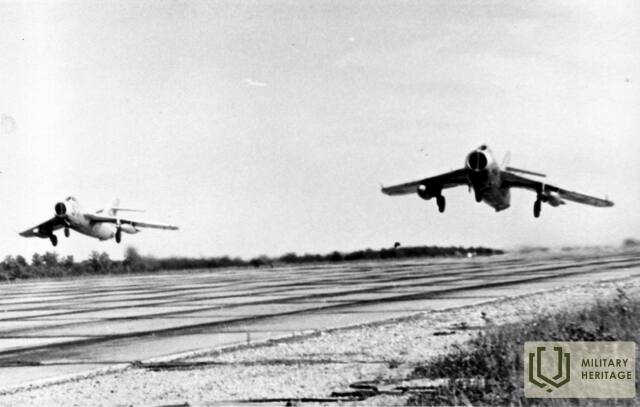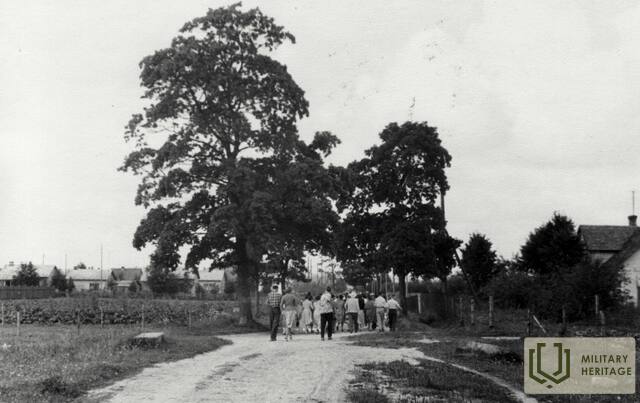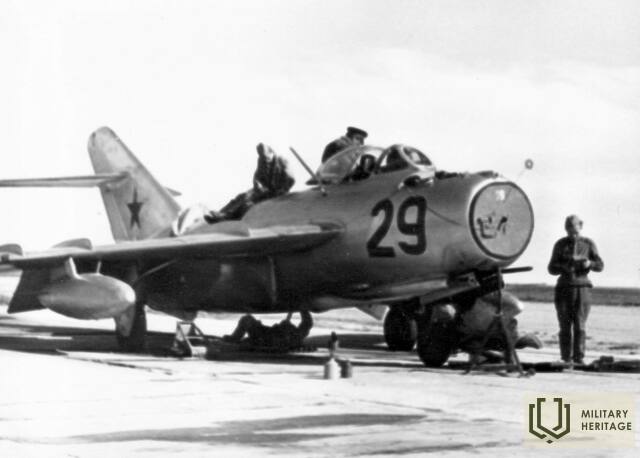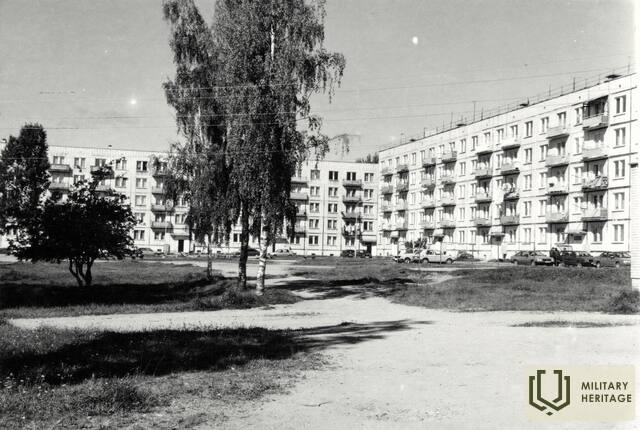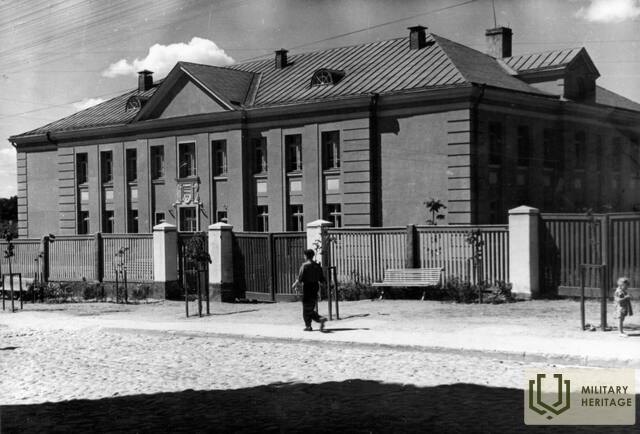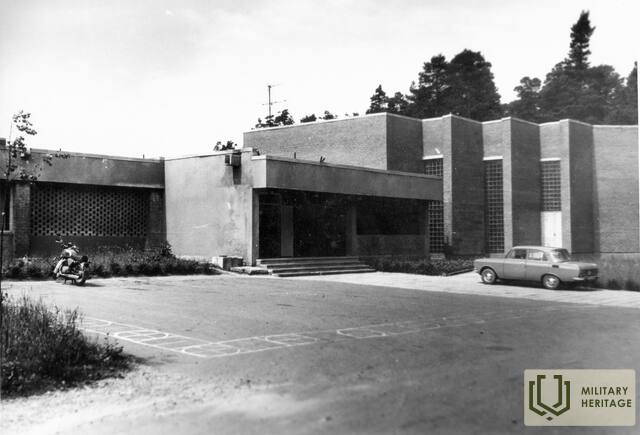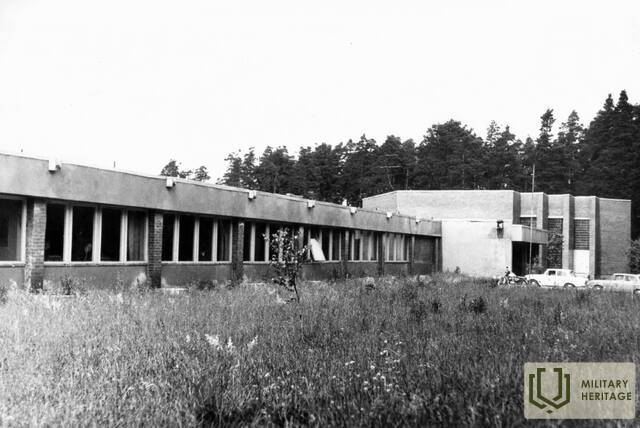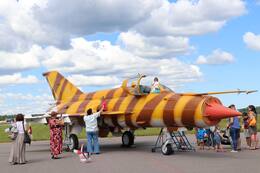Were nuclear warheads buried at Tukums airfield?
Former guard commander Aivars Skurstenis has come forward for an open conversation with the Tukums district newspaper “Neatkarīgās Tukuma Ziņas”. He was once a reserve officer and a field guard, who in 1993 was offered a position as a guard at the agricultural company “Durbe” led by Laimonis Mucenieks. There, he had to guard an office – the Līvāni house. That is how the story begins.
A. Chimney:
- I had been guarding for less than a month when representatives of the Ministry of Defense came to inquire about organizing the guard, because the Russian army was still at the airfield. They offered me the position of commander of the guard platoon and after a month they gave me the rank of deputy officer and handed me an order that I had been approved as a platoon commander. The documents were signed by Dainis Turlais. Already in 1996 I went to training in Denmark and then the merger of the Defense Forces and the National Guard took place. Juris Dalbiņš was appointed commander of the National Armed Forces (this was due to pressure from the National Guard). This is a bit of history.
We brought the first troops to the airfield on October 12, 1993, although the instructors had been working much earlier. Even then, the Russian army was still inside the airfield, controlling all the posts and headquarters. The agricultural company "Durbe" immediately took over all the oil bases and also the headquarters of the airfield commander Turchin.
But the so-called “deaf and dumb” part was surrounded by three fences – one made of planks and two made of barbed wire. There were two hangars there, which supposedly could have contained nuclear warheads, but it is more likely that they contained uranium-enriched bombs (uranium improves power and penetration) for the destruction of specific objects (the Americans used such in the 1991 Persian Gulf War); because nuclear warheads are still used for medium-range and similar missiles launched from shafts or mobile launchers. In the “Andalusia part” of the airfield – near the barracks – there was one lead-lined hangar, which probably contained short- or medium-range missiles. They could indeed carry nuclear warheads, but this area was not in our security zone and the lead plates were looted. If there was any radioactive radiation there, then most likely some of the lead thieves are already underground...
Colonel Karl Keene, who knew these things well, claimed that there was a so-called "50 complex" there - a mobile rocket launcher, but it was removed in the late 1970s...
During Gorbachev's time, when agreements were being made to reduce armaments, the Russians decided to outsmart those Western men - literally within a couple of days, they changed bomber pilots and other personnel into Naval Aviation uniforms (the pilots themselves complained about it), but something didn't work out for them, and they still managed to reduce them.
Chemistry buried in the ground
– What can you say about the “deaf-mute part”?
– There were two caponier-type hangars with hoists and equipment for maintaining a certain temperature. Unlike the others, their entrance was hidden behind a wall of concrete blocks; missile warheads could really be stored there;
– But there was supposedly a bus depot nearby?...
– There was a warehouse there, but not for storing ammunition; most likely – a place for assembling missiles. Speaking of something being left on the ground… When I started leading the airfield security, I was also studying at the National Defence Academy, where, among other things, Captain Gunārs Opmanis taught about weapons of mass destruction. He was a professional chemist and became interested in the airfield because I told him that the Russians had left both chemical protective suits and substantial litmus supplies. I wanted to find out where exactly the day… Otherwise – Colonel K. Keene arrives, we check the lockers and find large-caliber machine gun cartridges with bullets. The soldiers at the headquarters found it!
Together with Captain Opmanis, we walked around the entire airfield and checked – the radiation background was not elevated anywhere (including in the caponiers). There could be a slight danger on one hill behind the warehouses – if you stayed there for a longer time, you would start to feel dizzy. Captain Opmanis explained that it was not from radiation, but most likely some chemicals were buried in this place. We specially guarded this place, because there was a whole warehouse with the so-called – HIMDIM – used chemical protection suits. In a separate white brick building there were metal barrels and ampoules with deactivation liquid for washing the suits. These ampoules were stolen by local boys, because – when one of them was torn at school, you couldn’t go to class for a day – it smelled so terrible.
While I was on a course in Denmark, Captain Tisļonoks replaced me, and he ordered those barrels to be buried in the ground – most likely they were already rusted and the soil in that place was contaminated. It would be worth investigating. Captain Opmanis, who had conducted a chemical analysis of these barrels, said that they were various chemicals – ammonium chloride (used in gardening), dichloramine-T – a disinfectant, chloramine (so-called soapwort) and in the barrels – ethanoylamine (a reagent in industry). For what purpose were they used? We do not know. It should be added – in one place, however, increased radiation was shown – in the “deaf-mute part” in one building, there were all kinds of aircraft spare parts. Captain Opmanis, out of interest, checked the back of a pilot’s cockpit pressure gauge and, to our surprise, the background significantly exceeded the norm. Interestingly, nothing was shown on the screen, but there were apparently some radioactive elements on the back...
Both a prostitute and an illegal alcoholic beverage
– When the Russian soldiers were being evacuated, did they try to sell everything, movable or immovable?
– Yes, that was it – they sold everything they could move – even old bobiks. They offered me a 5.45 mm machine gun with a set of 300 live cartridges for LVL 130 with all the Russian papers. At that time, that was a lot of money. They offered a completely new small-capacity generator with an internal combustion engine – with that we could provide electricity to our entire barracks – for LVL 70... After that, those who had settled in Jauntukums brought everything into garages and, when some of them moved out, they started to keep the price down.
At that time, the war in Chechnya began, and at the expense of this war, Russia "wrote off" a lot of weapons. From unofficial sources I know that surface-to-air missiles were also found in Chechnya. What did the Chechens fight with? With weapons manufactured in Russia, and the stocks were constantly replenished...
But many of our men from the Ministry of Defense had purely economic interests – a good example was the company «Rabarberi», founded under the auspices of the ministry, which was supposedly engaged in the production of mineral water at the airfield (At that time, in one of the hangars we came across wooden tubs and several thousand glass bottles, which are used to fill vodka, not mineral water. – Ed.). My boys sat on the caponier and recorded everything with binoculars – including the fact that one night an entire train tank was buried in the ground. That's why we became unwanted – we guarded too diligently...
No army reveals its secrets.
– Did the Russian officers tell us what was stored at the airfield?
– Yes, there were talks. There was an old man named Mikhalic – he worked as a cook; he was a smart man. He said that in the 60s there was an idea to store nuclear weapons here – even a hangar was built, but the plan remained unrealized. There is no information about the “deaf and dumb”, because they were like a part of a part or a country within a country. They could only be accessed with special passes. It is known that there was a special storage for the assembly of “surface-to-air” missiles, because before launching or testing them at a landfill, they still have to be assembled.
– I was surprised that there were special concrete watchtowers with loopholes around the “deaf and mute” section.
– Such turrets are located not only at and around the airfield, but one, intended for shooting, even on the side of the Ventspils highway. There are many such turrets.
– What is known about underground passages or bunkers – have you heard so many stories?
– I have not seen it myself, but I have heard that ammunition was taken through the underground passage. In principle, after the Russians left, Turchin's headquarters was taken over by L. Mucenieks, and if there was a bunker, it was bricked up and concreted over. The commander of such an airfield would never sit in a “naked” headquarters – according to legends told at the time, one of the underground passages led from Turchin's headquarters to the “deaf and dumb section”. There is supposedly one such bunker there, the passage of which is torn off; I have heard that there is even a 25 m shooting range inside, a weapons storage room and the like. That could also be the case – it is simply that already at the time when we entered, everything was very carefully concreted over and camouflaged; left to history.
– So, when the Russians handed over the airfield to the Latvian side, didn't they leave behind documents about all communications?
– I have seen the act of handover – there was a whole list with inventory records and total value, but no paper about communications. In my opinion, it was a plan – it was supposed to show that the Russian army was leaving solidly, but no army reveals its secrets. If there was anything important, it was kept as secret as possible.
Airfield destroyed by kangaroos
– However, the collapse of the Soviet Union came suddenly, military facilities in the Baltics had to be abandoned in a relatively short time. And – what happened to the strategically important airfields in Latvia? As soon as the army was about to leave, look – there was already a private company with ties to the Russian side inside... The same Vasilijs Melniks, one of Latvia's millionaires and Godmanis' advisor (!), – once graduated from the Alkšnis flight school, but during the Revival became an influential person in the port and shipbuilding business. “In my opinion, that was Russia's plan – to push its people into strategically important facilities and bring them to a standstill; it was impossible to allow the military heritage left by the Russians to become a springboard for a foreign army.”
A vivid example is the transport aviation airfield in Jēkabpils. If the pavement of the Tukums airfield was able to carry 1600 t per axle (this is a very high carrying capacity), then the Jēkabpils airfield – 1900 t! But what happened? The Jēkabpils airfield was also given the status of a reserve airfield, and it was taken over by a German company, which in the end turned out to be connected to Russia. What do we know about the Jēkabpils airfield today? Nothing, because there is no such thing anymore.
At one time, every professional understood that the Tukums airfield was in much better condition than the Lielvārde airfield, although the opposite was officially claimed. The Lielvārde airfield was built in a swamp with damaged drainage, it is overgrown and sinking. In Lielvārde, some of the slabs were also stolen, there were almost no buildings, and yet it was recognized as more valuable than the Tukums airfield, although even the repair hangars here were in perfect order - with all the fire pumps (in my time, one soldier accidentally turned it on, and the foam started to fall); only the barracks and the club were in a sorry state. But that is already insignificant; but everything related to the airfield was in perfect condition (currently, NATO has allocated 31.5 million lats and an additional 5.5 million for the renovation of the Lielvārde airfield runway and infrastructure - the Ministry of Defense. - Ed.)
Our guard platoon was like a toothache for the higher command. We – the soldiers of the guard platoon – thought that Latvia needed the airfield – we would have jobs, so we tried to protect everything. We gathered all the still half-useful furniture in one hangar, but I was sent to Denmark, another commander was appointed in my place, and the hangar was looted... "We counted all the runway plates dismantled for the airfield, caught the thieves (mostly L. Mucenieks' people), wrote down the car numbers and reported to the command, but it turned out that everything had been coordinated..."
– So it turns out that the leadership of the Ministry of Defense was also corrupt and made decisions that were disadvantageous to Latvia?
– I have not said it and I cannot prove it, but all the Ministers of Defense have been to the seemingly insignificant Tukums airfield – T. Jundzis, JA Trapāns, VV Pavlovskis and State Secretary J. Davidovičs, not to mention the Commander of the Defense Forces Dainis Turlo and the Commander of the NAF Juris Dalbiņš. We see what forces D. Turlais supports today (he ran in the municipal elections in the Šleseras party, before that he was a deputy in two left-wing parties; once condemned by journalists for organizing the Sports Games of the Ministry of the Interior in Kandava on the day of national mourning – June 14. – Ed.) and – do we know who Laimonis Mucenieks, the director of the bankrupt agricultural company «Durbe», was and what he is doing today? How could a simple long-distance truck driver from Jelgava obtain the rights to manage the airfield? Why was L. Mucenieks staying in Jurmala, in a hotel maintained by Russia?...
Interview from the newspaper "Neatkarīgās Tukuma Ziņas"
Related objects
Aviation Museum “SKY ZOO”
The Aviation Museum “Sky Zoo” is located in Smārde parish, Tukums municipality, in the territory of Jūrmala Airport that was once the Tukums Military Airfield. The exhibit includes aircrafts YAK-40, AN-2, SU22M4, PZL TS-11 Iskra and a helicopter MI-24. Tour of the airfield includes hangars, caponiers and engineering equipment. The airfield was used by both the German and Soviet armies. During the Soviet occupation it was one of the most important military airfields in the territory of Latvia. The fighters stationed there were intended to attack enemy ships and bomb coastal fortifications. On the night of 9 November 1975, a battle alarm was received at the Tukums airfield – there was enemy warship in the territorial waters of the Soviet Union (in the Gulf of Riga), and it had to be destroyed. Several planes took off from Tukums. However, it turned out that it was the Soviet naval warship ‘Storozhevoi’ (Guardian) on which an armed mutiny against the existing Soviet regime took place. When the planes reached the warship, the battle was still ongoing. Later the rebel leader Valery Sablin, a Soviet naval officer, was wounded and the mutiny ended. He was sentenced to death for treason. This was one of the most dramatic events showing the discontent with the regime and marking the approach of its collapse.




